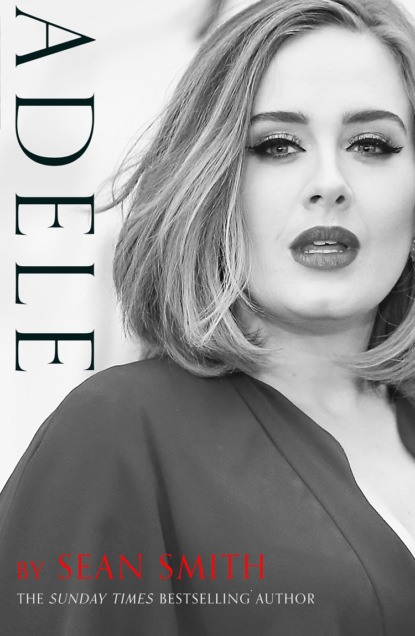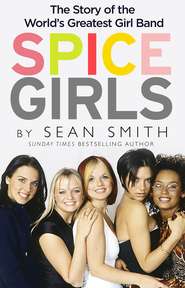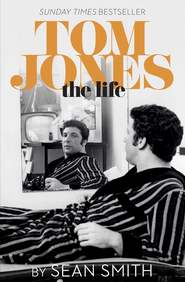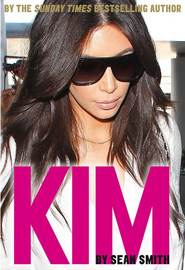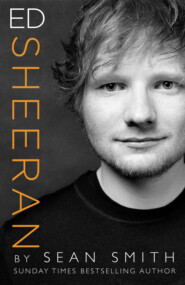По всем вопросам обращайтесь на: info@litportal.ru
(©) 2003-2024.
✖
Adele
Настройки чтения
Размер шрифта
Высота строк
Поля
The one temptation Adele did give in to, at the age of thirteen, was smoking – she loved it. She liked nothing better than gathering with her friends in Brockwell Park, which was a mile or so away, to talk and smoke her preferred ‘rollies’ before drifting home. Adele smoked a lot.
Penny was young and enlightened enough to want Adele to find her own feet, so she didn’t judge or interfere when her daughter was, at various time, a grunger, a rude girl, a skater and a nu-metaller. She was more concerned when Adele was sent home from school for fighting – a spat about Pop Idol of all things.
The autumn of 2001 saw the first series of the talent show that launched Simon Cowell on the nation. Unusually for a young teenage girl, Adele was instantly a huge fan of Will Young, not Gareth Gates, who had pin-up looks and was clear favourite to win. She recalled, ‘I was obsessed. Will Young was my first proper love.’
Tensions were running high in the corridors of Chestnut Grove, especially as Adele seemed to be in a gang of one where Will was concerned: ‘The Gareth Gates fans were horrible to me and I wasn’t having any of it. We had a fight and I was called into the head teacher’s office and sent home. It was serious.’
At least Adele had the satisfaction of seeing Will pull off a surprise win in the competition. She eventually met him when they appeared on the same bill in 2007: ‘It was so embarrassing. The first thing that came out of my mouth was “I voted for you 5,000 times.”’
Adele was in danger of drifting aimlessly through her teenage years, her future threatened by poor attendance at school and a lack of direction and purpose. All she knew was that she wanted to pursue music professionally.
She had no desire to follow in Will Young’s footsteps and try to win Pop Idol. She may have thought he was terrific, but she was unimpressed by much of what she saw on the show. The problem, as she saw it, was that kids were being given false hope by their parents. It even made her mistrust the nice things Penny was saying about her singing.
‘You’ve got all their parents, and they’re like, “Yeah, she’s the next Whitney, the next Mariah.” And then they go on and they’re shit. So when my mum was saying that, I was like, “Oh yeah, you’re trying to con me. You’re trying to get me to make a fool of myself.”’ In any case, as the rules stood at the time, she was too young and would have to wait a couple of years.
Adele was still only thirteen, and doing her best impression of a bolshie teenager, when someone whose opinion she valued praised her. A friend of her mother’s, who, according to Adele, was an ‘amazing Faith Evans-type singer’, heard her singing one night at the flat. She was sufficiently impressed to insist that Adele should pursue her singing seriously. Adele didn’t need much persuading. She was well aware that music was the only career she wished to have.
Penny was enthusiastic, but wasn’t sure how to proceed. As Adele explained, ‘While my mum is the most supportive mum on Earth, she wouldn’t have known how to channel me. With her I’d probably have gone the classical music route, or maybe Disney, or musical theatre.’
Fortunately, the solution was a short train ride away in a suburb of Croydon called Selhurst. The BRIT School was the only free performing arts school in the country and it would change Adele’s life for ever.
4
True Brit (#ulink_edc1f1a0-a053-5e70-8aee-a37722878824)
Adele’s reaction was forthright when it was first suggested she might apply to the BRIT School for Performing Arts & Technology. ‘I’m not going there!’ she bellowed. ‘It’s a fucking stage school. I can make it on my own.’
She might, at a pinch, have considered going to the Sylvia Young Theatre School on the grounds that Emma Bunton had blossomed there. That was a non-starter, though, because her mother couldn’t afford the fees. Further investigation revealed that the BRIT School cost nothing, although you needed to pass an audition to be accepted for a place. It was basically a state comprehensive with a twist. It would mean she could leave Chestnut Grove – and that was certainly a good thing as far as she was concerned.
The BRIT School was founded in 1991, but, a decade later, was hardly the household name it is today. It was the brainchild of an educational entrepreneur, Mark Featherstone-Witty, who saw the possibilities for a charitable performing arts school in London after watching the Oscar-winning 1980 film Fame. Alan Parker’s invigorating and inspiring tale of life in the New York High School of Performing Arts was so popular that it gave rise to a TV series that ran for five years. Cast members formed The Kids from Fame and had a number one album.
Featherstone-Witty persuaded George Martin, the celebrated producer of The Beatles, to back his idea. Martin’s support and enthusiasm proved so influential in getting things up and running that he was described as the ‘Godfather of the BRIT School’.
The other key figure was Richard Branson, whom George Martin brought on board. In the early days, the boss of Virgin was the public face of the project, initially called the London School of Performing Arts and Technology. He insisted that other record companies, as well as his own, contribute to the new venture.
Politically, the time was right for such a school and the Conservative government backed the idea for state funding as part of their City Technology College (CTC) scheme. The impetus it needed came when the record industry signed up as its sponsor.
The British Record Industry Trust (BRIT) gave the school its catchy name and has contributed in excess of £7 million during the last twenty-five years. The school is partly funded from the profits from the annual BRIT Awards, which makes it rather fitting when old pupils clean up on the night. It also raises a great deal of money through student performances at venues including the Roundhouse in North London, a favourite of Adele’s because it was close to the vintage stalls of Camden Market.
The school principal when Adele submitted the long and detailed application was Nick Williams, a career educationalist who mostly left the teaching to his artistic faculty. His task was to disprove the famous observation of Margaret Thatcher that she didn’t want a ‘school for unemployed artists’.
Perhaps perversely, his job at a school that many perceived to be a fame academy was to dampen aspirations: ‘Students think that you expect them to want to be famous. It’s just a view that has something to do with celebrity culture or with what a fame school is, and we aren’t any of these things. We almost have to say to pupils, “We don’t expect you to be successful.” We get their feet on the ground and make them realistic.’
The priority for Penny Adkins was to make sure her daughter was happy and had the opportunity to do what she wanted. The BRIT School might be the answer, but first Adele had to be accepted. Competition was fierce even before it could boast of alumni who were household names. Her application was strong enough to be selected for the next part of the process. The school had been impressed by the articulate and mature way she described herself as ‘someone who is dedicated to music purely through love and passion for it’.
She wrote that she was willing and able to explore different styles of singing, playing and performing. She told the school that she was interested in arranging music, because it would ‘help me to build on my songwriting both musically and lyrically’. This was not the work of a typical thirteen-year-old. Her personal insight shone through when she described herself as someone who will ‘keep trying until I am completely satisfied with what I have created’.
She was invited to an open day in the autumn of 2001. The BRIT School then consisted of two main buildings. A red-bricked former high school for girls, built in 1907, housed the classrooms for the core curriculum subjects, such as maths and English. The music department was across the recreation ground in a more modern pavilion with an inviting glass-fronted atrium, which students would drift into at 9 a.m. to start the day.
As is often the case with open days, Adele was assigned a student in the year above to look after her and chat about life at the school. She was shown around by an aspiring singer called Beverly Tawiah, from Battersea, who filled her with enthusiasm. ‘She really encouraged me and she was a brilliant singer. I thought, “That’s it. I’m coming here.”’
Tawiah may not yet be a star, but she is a much-in-demand singer, working with, among others, Mark Ronson. It is a fact of the music business that it is far harder to be noticed as a black female soul singer, however excellent, than it is as a white one.
The open day was one part of the process; her audition interview was the next. A couple of hundred applicants were chasing twenty-four places. The new deputy head of music, Liz Penney, remembers that Adele, thanks to alphabetical order, was the first prospective student she interviewed when the admission process began in January 2002. She had no idea what general standard to expect.
Adele, who was not yet fourteen, sang ‘Free’ by Stevie Wonder, one of the lesser known, soulful ballads on his 1987 album Characters. It’s not an easy song to perform, requiring vocal dexterity and a strong lower register. She then played ‘Tumbledown Blues’ by James Rae on the clarinet, a classic study piece. She wasn’t in love with the instrument, even though she had progressed to Grade 5. This was a decent achievement, but nothing that made her stand out from the crowd.
‘I didn’t see her play the clarinet after that,’ says Liz, ‘but I remember thinking she can play as well, so she must have had a little tuition. But when she opened her mouth to sing, I thought, “Well, that’s a larger voice than you would expect from a thirteen-year-old.” I immediately said to myself, “Oh yes, she’s in.”’ Liz asked the teenager why she thought she should be given a place at the school. ‘Because I am creative,’ responded Adele.
Penny came along to support her daughter and immediately impressed Liz: ‘I remembered meeting her mum on that first occasion because she is called Penny and my surname is Penney. So we were the two Pennies. And she is, I think, exactly the same age as me, so it was a bit like, “This could be my daughter.” It was clear she was going to be a supportive parent. She knew exactly what Adele was applying for. It wasn’t just an idea of “Oh, I want to go to the BRIT School”. Her daughter was here to learn her craft. Sometimes you sort of build a relationship with some parents and not with others. Penny was one of the former. She came to every show.’
Adele’s stepfather Simon would join them for parents’ evenings and he encouraged her throughout her four years at the BRIT School, even though his relationship with Penny was coming to an end. The teachers always thought he was Adele’s real father.
The BRIT School takes pupils either at fourteen or two years later. For Adele, it would mean two years of mostly ordinary school, with Thursdays devoted to pursuing her specialist strand. The options included theatre, musical theatre, dance, film and media or visual arts and design. For Adele, the choice was always going to be music.
She began the new phase of her life in September 2002. On the home front, there was change as well. Penny and Simon split up and she and Adele moved to West Norwood, no more than one and a half miles away, two minutes round the South Circular Road. Simon was still very much part of their lives, but he and Penny no longer lived together.
West Norwood is one of those districts of London that you need a sat nav to find. Nobody really knows where it is, although it is in the main catchment area for the BRIT School. It’s actually between Streatham and Dulwich in SE27. Soon after Penny and Adele moved to the area, there was some amusing banter in the newspapers about local residents pretending that they lived in Dulwich Village, less than a ten-minute walk away. Nothing could be further from the truth. All over London, million-pound neighbourhoods stand shoulder to shoulder with impoverished streets and bleak estates. Nowhere is this more starkly evident than in this enclave of south-east London.
Tom Utley of the Daily Mail, who has lived there for many years, described West Norwood as reeking of ‘failure and frustrated hopes’. He continued, ‘Everything about the place – its uneven pavements, carved up by the cable-television companies, its net curtains, peeling paintwork, weed-infested gardens and its whiffy kebab shops – is shabby and suburban.’
Penny first found a flat in a building containing four apartments in Chestnut Road, one of the streets of large detached houses off the Norwood Road. These were the streets that appealed to young couples with growing families who had aspirations for something better. One attraction of their new neighbourhood was that they were close to the overground station and it was easy for Adele to commute to school.
They stayed only a few months before Penny found a larger flat above the Co-op on the main road. It wasn’t exactly a step up. The security guard at the store told women in the neighbourhood to take care at night because the area was a ‘war zone’. He wasn’t exaggerating.
The gangs would drift down to the main road from the notorious York Road estate to deal and take drugs outside the Texaco petrol station next to Adele’s building. On any given day, a local shopkeeper might be the subject of ‘steaming’, when one of the gangs would rush into a shop, stripping it of everything they could lay their hands on.
The seedier side of the neighbourhood was represented by a ‘massage parlour’ close to the railway station. Always there was the undercurrent of violence and menace. In one grisly incident that became the subject of local legend, someone was stabbed to death in a fast-food restaurant and his body left in the freezer.
On any given morning, commuters waiting on platform 1 at the overground station in West Norwood would see a young teenager in a Goth studded collar and parachute pants giving her full concentration to heat magazine or the latest edition of i-D, the style bible for modern youth culture. It was Adele on her half-hour commute to school.
You wouldn’t see her every morning. In the aftermath of her unhappy time at her first high school, she still had trouble getting out of bed. Gradually, the BRIT School and, most importantly, the other students won her round. She explained, ‘Whereas before I was going to a school with bums and kids that were rude and wanted to grow up and mug people, it was really inspiring to wake up every day to go to school with kids that actually wanted to be productive at something and wanted to be somebody.’
Her favourite day of the week was Thursday, when five solid hours were dedicated to music. At the BRIT School, it wasn’t simply a case of there being no fees: all the equipment, the musical instruments and the rehearsal rooms were free as well. So when classes were over for the day, it meant personal time to get on with projects and practice.
Liz Penney noticed Adele’s commitment right from the start. Liz was forever passing her in the corridor ‘working by herself, writing lyrics, picking up her guitar and learning to accompany herself’.
Simon had bought her a ‘really nice’ Simon & Patrick acoustic guitar. Hand-crafted at the Godin factory in Quebec, Canada, it was a superior instrument. Pete Townshend, one of the greatest of all pop guitarists, strummed a few chords when she let him try it a few years later. ‘It’s a beautiful guitar,’ he told her.
She wasn’t sorry to give up the clarinet, and for a while took up the saxophone, which she found easy to play. She enjoyed belting out a tune and would take it home to practice. Her next-door neighbour, who happened to be a singer, was impressed when she heard Adele rehearsing.
Shingai Shoniwa, by coincidence, was a former BRIT School pupil. She had studied theatre, but switched to music when she joined forces with another student, guitarist Dan Smith. Together they formed a band called Noisettes. They built up an enthusiastic live following before landing a record deal in 2005 and finally releasing their first album two years later. They had a chart breakthrough in 2009, when the single ‘Don’t Upset the Rhythm (Go Baby Go)’ reached number two.
The two South London girls became firm friends, sharing a love and enthusiasm for music, even though Shingai was more than six years older than Adele. Shingai looked like an African supermodel. She was fashionable and flamboyant, but had a voice that Adele thought was terrific: ‘When she was rehearsing, I used to press my ear against the wall to listen.’ When opportunity allowed, she would pop next door to see Shingai and they would spend the evening jamming together. By this time, Penny and Simon had bought Adele a piano and sometimes Shingai would bring some drums over to hers. It was part of Adele’s musical education. The older woman joked, ‘Awesome days. They should put up two blue plaques!’
Adele stopped playing the saxophone when she found too many rollies weren’t helping her breath control. In any case, she preferred using her guitar to compose her own songs, which pupils at the BRIT School were encouraged to do.
Liz Penney was by no means the only teacher who appreciated that Adele had something extra. Stuart Worden, the current principal, but then assistant to Nick Williams, recalls noticing Adele for the first time in a Year 10 history class: ‘I popped my head in to see what was going on and they were studying the civil rights movement. I mentioned Billie Holiday’s “Strange Fruit” and this girl said: “I love Billie Holiday.” No fourteen-year-old loved Billie Holiday! I wondered who this girl was, listening to such sophisticated music at such a young age.’ Adele then engaged Stuart in conversation, telling him she was also a fan of Eminem. He thought it was a nice mix for her to be a fan of classic jazz and ‘a rapper with a spark and anger about him’.





